What you do not understand: Modern art has no characteristics and that is why so many do not understand what it is. Modern art is a moving target. So many of us don’t understand the characteristics completely and it stands to reason why is because modern art is forever in motion. So what really is modern art and how can the characteristics be clearly defined if it is constantly in motion?
“The characteristics of modern art is a philosophical movement in art history. “Modern Art” is not defined by any one characteristic like abstract art, expressionism or minimal art, pop art, cubism but is the transformation of what we consider being traditional and current art at present to abstraction. “Modern Art” brings in fresh ideas that have become current and now “Modern Art”. “Modern Art” is the visual language that is always changing in composition, color, shape, and lines.“
Modern Art Is A Philosophical Movement In Art History (What You Do Not Understand)
In Western culture, modernism describes a collection of genres that are all dedicated to the same fundamental agenda. And that agenda is to challenge the definition of what is art. We have built standards for what was or wasn’t art for centuries. Then something changed in the 19th century. But I submit to you that nothing really has changed because artists have always pushed the envelope of traditional assumptions, rejected art standards, and explored new ways of expressing themselves. Modern movement and art as we know it has transformed and still is transforming. So, it’s fair to say it’s characteristics are evolving. And here is how the characteristics of modern art are evolving and what actually defines modern art at it’s core.
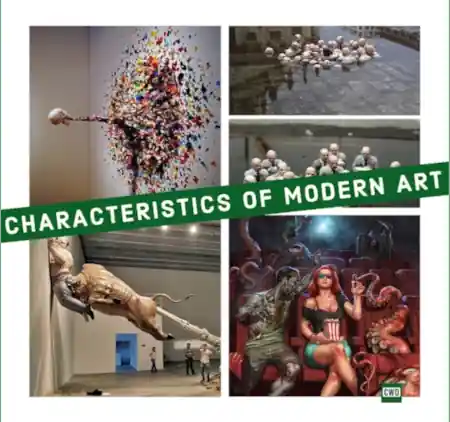
Take a look at history, see the transitions between the major periods in Western art to see the movement and the pushing of traditional assumptions and the rejection of current art standards.
Major Periods In Western Art
Ancient Classical Art
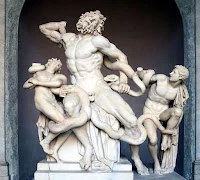
Ancient Roman or Greek architecture and sculpture. Concerned primarily with geometry and symmetry rather than individual expression.
Medieval Art
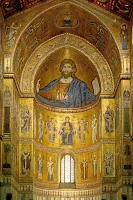
Over 1000 years of art in Europe, and at times in the Middle East and North Africa, represents a wide spectrum of time and place.
Renaissance
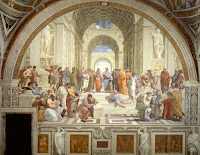
Marking the transition from the Middle Ages to Modernity, from the 15th to the 16th century.
Renaissance to Neoclassicism
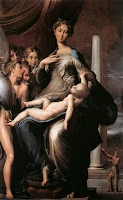
Renaissance artists believed in more natural and expressive nude sculptures of art and neoclassicism period focused on retaining the Age of Enlightenment.
Romanticism

Romanticism was characterized by its emphasis on emotion and individualism, as well as by the glorification of the whole past and nature.
Romanticism to Modern Art

From Norwich School of painters in 1803 to the Pre-Raphaelite Brotherhood in 1854.
Modern Art
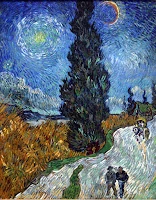
Artistic work produced during the period extending roughly from the 1860s to the 1970s.
Contemporary Art
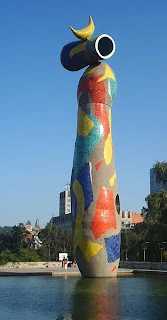
Today’s art, created in the latter half of the 20th century, or the 21st century. Contemporary artists work in a world that has a global impact, is culturally diverse and technologically progressing.
Modern Art Attributes And Characteristics
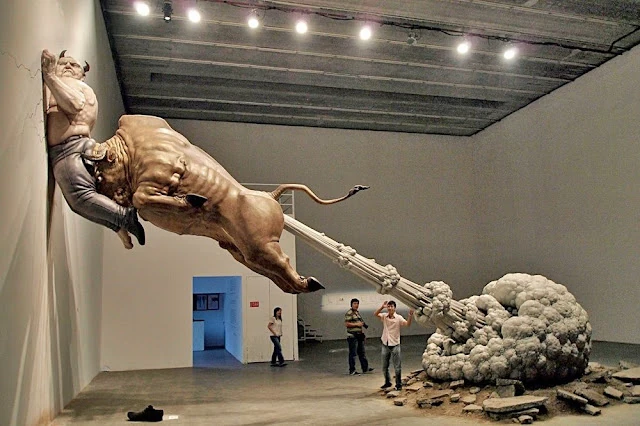
David Graeber’s essay on jobs is a masterpiece that shows the pointlessness of most work, the psychological and spiritual damage it causes and how people are fooled to direct their well-justified anger to those who build lives of true meaning.

Blair Buswell Blair likes the challenge of capturing a subject’s gesture, mood and expression. He has learned that all great art begins with a strong composition, which guides the viewer’s eye through the abstract forms. He tries to combine all these elements in order to bring out a sense of life in his work.
Modern Art Illustration
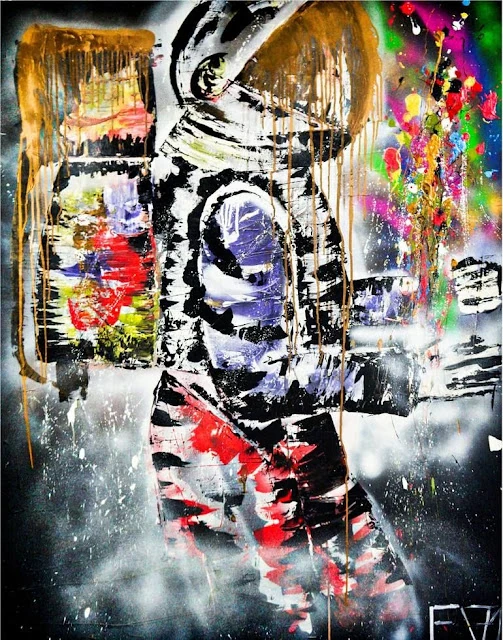
Acrylic/spray paint painting by Fifi, characteristics of modern art.
Architecture In Modern Art

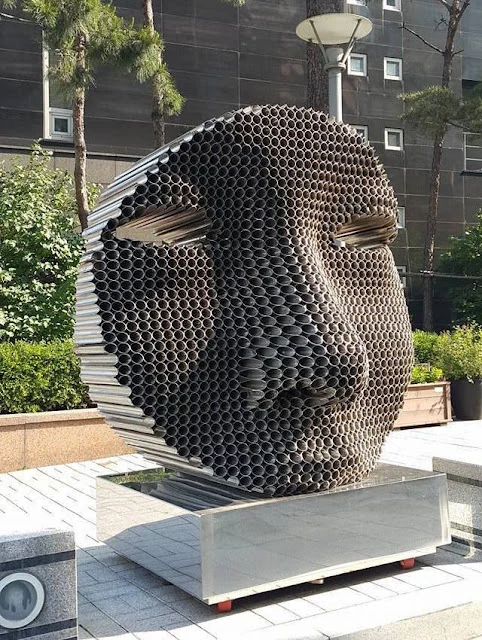
Artist Yi Chul Hee designs beautiful, imaginative sculptures made of layered pipe layers. Out of his carefully made piles of hollow tubes emerge unusual shapes and forms. Every piece plays with light and shadow, allowing it to see through every change in perspective, and to move visually. Hee ‘s balanced sculptures, intricately designed to offer texture and an impression of solid shapes, juxtapose solid and empty space to form three-dimensional sculptural masterpieces. The sharply cut pipes of the Korean artist translate into completely shaped and well-rounded final figures. Its technique of halftone also creates a continuous gradient effect. Hee cuts the material piece by piece, then stacks the lengths of the pipe together to form complex shapes.
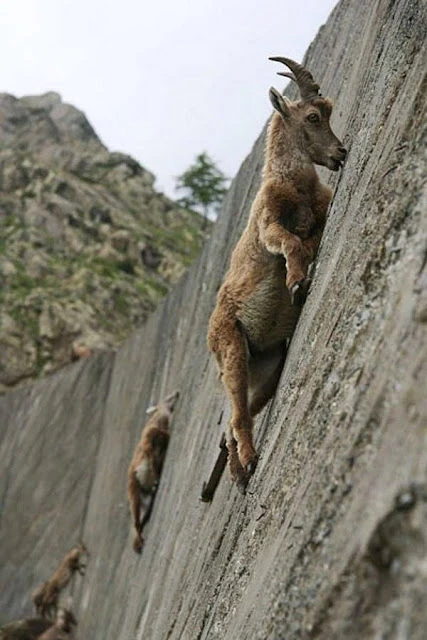

Stunning brick sculptures Brad Spencer Reidsville, a North Carolina- based artist, works with bricks to produce eye catching figurative sculptures. Each piece of work in the growing collection of the sculptor is a fascinating look at a common medium that is used unconventionally.


By Ari-Matti Toivonen game artist.
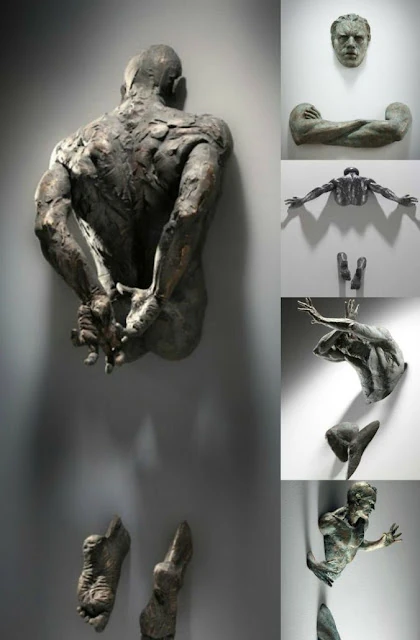
Man in wall sculpture, modern art.
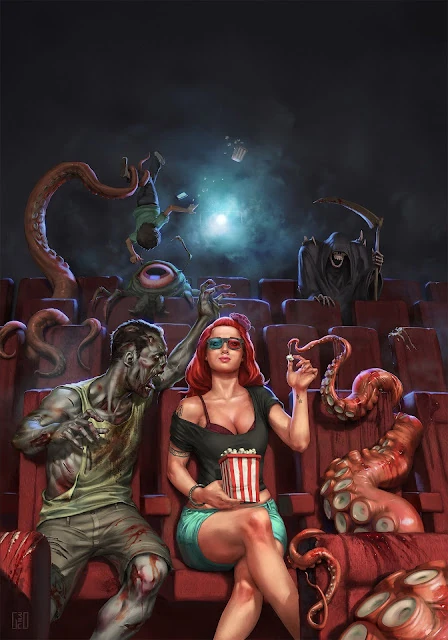
Abstract art Flavio Greco Paglia Poster Artist – Illustrator This is the illustration he did for Ventana Sur / INCAA. It’s a poster for Blood Window, its horror & fantasy film market. It is representing the segment in many international film festivals throughout the year. He took this painting process from a Sam Neilson’s tutorial.

Zombie art by Isaac Corda. Men and women are suspended and separated in a gesture or posture that may assume several symbolic meanings. The sympathetic characters are easy to relate and laugh with. They present fragments in which the organism, still present, retains encouraging survival symptoms. In the height of the sole of the passers-by, the precariousness of these anonymous statuettes reflects the nomadic remainders of an incomplete structure of our culture. Those little sculptures ponder the destruction and reconstruction of everything around us. They take the irony of our life to heart.
Isaac Cordal sympathizes with his little people and you can sympathize with their circumstances, their leisure time, their waiting for buses and even their more tragic moments such as premature death, suicide or funeral for family members. On top of houses, on top of bus shelters, the figures can be found in gutters; in other rare and unexpected locations.
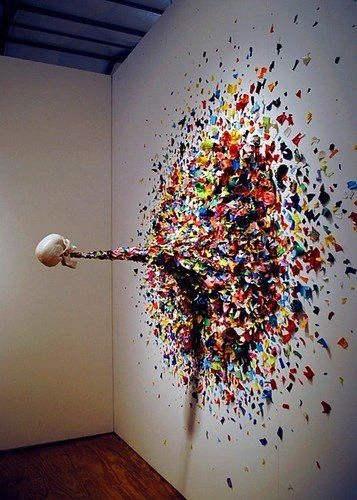
Puking rainbows art.
Is Modern Art Trash?

Modern Art Encompasses A Wide Variety Of Movements
Visual art, painting , sculpture , architecture, and graphic arts characteristic of the 20th and 21st centuries and the latter part of the 19th century. Modern art encompasses a wide variety of movements, theories, and attitudes whose modernism resides in particular in a tendency to reject traditional, historical, or academic forms and conventions in an effort to create an art more in line with changed social , economic, and intellectual conditions.
The origins of modern art can not be clearly demarcated but it is widely accepted that it began in France in the 19th century. Gustave Courbet ‘s paintings, Edouard Manet, and the Impressionists represent a deepening rejection of the prevailing academic tradition and a quest for a more naturalistic visual world representation. In their repudiation of conventional techniques and subject matter, and their presentation of a more abstract personal view, the post-impressionist heirs of these painters can be seen as more distinctly modern.
A succession of diverse movements and styles that are the foundation of contemporary art and represent one of the pillars of Western visual culture originated from around the 1890s onwards. Those modern movements include Neo-Impressionism, Symbolism, Fauvism, Cubism, Futurism, Expressionism, Supremacy, Constructivism, Metaphysical Painting, De Stijl, Dada, Surrealism, Social Realism, Abstract Expressionism, Pop Art, Op Art, Minimalism, and Neo-Expressionism.
Is Modern Art considered trash? – When compared to other types of art, modern art is sometimes difficult to understand and considered garbage. Contemporary Art gets more difficult to grasp when it deviates from traditional forms. When looking at abstract items or lines on a plane, it might be difficult to determine what the artist intended. Furthermore, some contemporary artists are frequently just clowning about.
Are Many Modern Artists Lazy Or Lacking Talent? – Modern artists are frequently criticized for being slackers or lacking in skill. Modern painters sometimes appear lethargic or unskilled to the untrained eye. Modern artists, on the other hand, are far from underachievers or untalented. They have the ability to envision things in an art form before they are created. This is a very exceptional skill. You must be self-motivated and industrious to be a professional, modern, or contemporary artist.
Handmade Ceramic Fish Wall Art – Artists and their work have distinguished themselves from era to era and generation to generation as new developments emerge. Great artists are characterized by their singular ability to extract the essence of a certain moment in time, resulting in artwork that is timeless.
Why Is Contemporary Art So Bad Compared To Medieval Art? – Contemporary or Modern Art is bad compared to Medieval Art because of the lack of understanding of Contemporary Art. The Middle Ages was the period in European history from the collapse of Roman civilization in the 5th century CE to the period of the Renaissance The period is interpreted as beginning in the 13th, 14th, or 15th centuries, depending on the region of Europe and other factors.
In spite of the enormous variety seen in these movements, most of them are characteristically modern in their investigation of the potentials inherent in the medium of painting itself for expressing a spiritual response to the changed conditions of life in the 20th and beyond. These conditions include accelerated technological change, the expansion of scientific knowledge and understanding, the apparent irrelevance of some traditional sources of value and belief and an expanding awareness of non-Western cultures.
An important trend that began in the 20th century was that of abstract or non-objective art, in which little or no attempt is made to reproduce or depict objectively the appearances or forms of objects in the realm of nature or the physical world that exists. It should also be noted that the development of photography and allied photo-mechanical reproductive techniques has had an obscure but undoubtedly significant impact on the development of modern art, as these mechanical techniques freed or deprived manually performed drawing and painting from their hitherto crucial role as the only means of accurately depicting the real world.
Modern architecture arose from the rejection of revivals, classicism, eclecticism, and indeed all adaptations of past styles to the types of building that industrialized society in the late 19th and 20th centuries. It also emerged from efforts to create architectural shapes and designs that would use and reflect the newly available building technologies of iron and steel, reinforced concrete, and glass structures. Modern architecture had also implied the rejection of the applied ornamentation and decoration characteristic of pre-modern Western buildings until the spread of postmodernism.
Modern architecture ‘s focus has been a thorough concentration on buildings whose rhythmic arrangement of masses and shapes presents a geometrical theme in light and shadow. This growth has been closely related to the different styles of buildings that an affluent society needs, such as office buildings housing corporate executives or government administration. Chicago Modern, Functionalism, Art Deco, Art Nouveau, De Stijl, The Bauhaus, International Style, New Brutalism, and Postmodernism are among the most significant trends and movements in modern architecture.
What About Realism Of Nature Or Contemporary Life Art?
Realism, the exact, detailed, unembellished representation of nature or of contemporary life in the arts. Realism rejects imaginative idealization in favor of observing the outward appearances closely. Realism in its widest sense, therefore, has involved many artistic movements in various civilizations. Realism can be seen in the visual arts, for example, in ancient Greek Hellenistic sculptures that accurately depict boxers and decrepit old ladies.
The works of painters such as Caravaggio, the Dutch genre painters, the Spanish painters José de Ribera, Diego Velázquez, and Francisco de Zurbarán, as well as the French brothers Le Nain are realistic in approach. The works of Daniel Defoe, Henry Fielding, and Tobias Smollett, the English novelists of the 18th century, can also be considered realist.
Nevertheless, realism was not actively embraced as an artistic system in France until the mid-19th century. Indeed, between 1850 and 1880, realism could be seen as a major trend in French novels and paintings. One of the first use of the term realism was in the 1826 Mercure français du XIXe siècle, in which the word is used to describe a philosophy based not on imitating past artistic accomplishments but on the true and realistic portrayal of the models provided by the artist by nature and contemporary life.
In rejecting the artificiality of the academies’ classicism and romanticism as well as the necessity for contemporaneity in an effective work of art, the French realism advocates were agreed. They tried to portray the middle and lower classes’ lives, appearances, problems, customs, and mores, the unusual, the ordinary, the humble, and the unadorned. In fact, they set themselves conscientiously to reproduce all of the hitherto ignored aspects of contemporary life and society, its mental attitudes, physical settings, and material conditions.
Realism was sparked in the first half of the 19th century by many scientific developments. Among these were the anti-Romantic movement in Germany, with its focus on the common man as an artistic subject; the Positivist theory of Auguste Comte, in which the importance of sociology as a empirical study of society was highlighted; the rise of professional journalism, with its accurate and dispassionate reporting of current events; and the growth of photography, with its capacity for m All of these innovations sparked interest in capturing modern life and society accurately.
Important Modern Paintings – My Top Picks
Large Bathers (1894-1905). By the artist Paul Cezanne

The National Gallery in London has a painting called Large Bathers (1894-1905). By the artist Paul Cezanne. One of the most important modern paintings created around the turn of the century. The Large Bathers (Les Grandes Baigneuses) (1906), National Gallery of Art, London; Philadelphia Museum of Art; Barnes Foundation, Merion, Pennsylvania. By the artist Paul Cezanne (1839-1906).
The painting of the bathers is referred to as a ‘large’ painting solely to distinguish it from the many smaller paintings of the same subject that Cezanne created.
Why Do I Consider Cezanne’s Work Important In Modern Art?
Modern art’s Classical Revival owes a debt to Cezanne, who is widely considered to be the single most important modern source. Given the overwhelmingly unfavorable reaction he received from the majority of his immediate colleagues, who viewed his art as crass, bungling, and savage. Today as we look back in time find this to be ironic.
Jackson Pollock, Number One 1950 (Lavender Mist)

It is the work of art Jackson Pollock, Number One, 1950 (Lavender Mist), which exemplifies the aesthetic breakthrough achieved by the artist between 1947 and 1950. Earlier experiments with dripping and splattering paint on pottery, glass, and canvas on an easel served as the basis for his new way of painting. The National Gallery of Art in Washington, DC, has No.1, 1950 (Lavender Mist) (1950). Jackson Pollock’s painting (1912-56)
Why Do I Consider Jackson Pollock’s Work Important In Modern Art?
His novel techniques of dispensing with easel, palette, and brush; substituting low-quality industrial paints for high-quality oils; working on the horizontal plane of the floor; and dispersing the focal point throughout the composition to continuously lead the viewer’s eye through webs of color were the first steps toward the establishment of a new type of abstract painting.
What Are New Types Of Art?
Installation Art
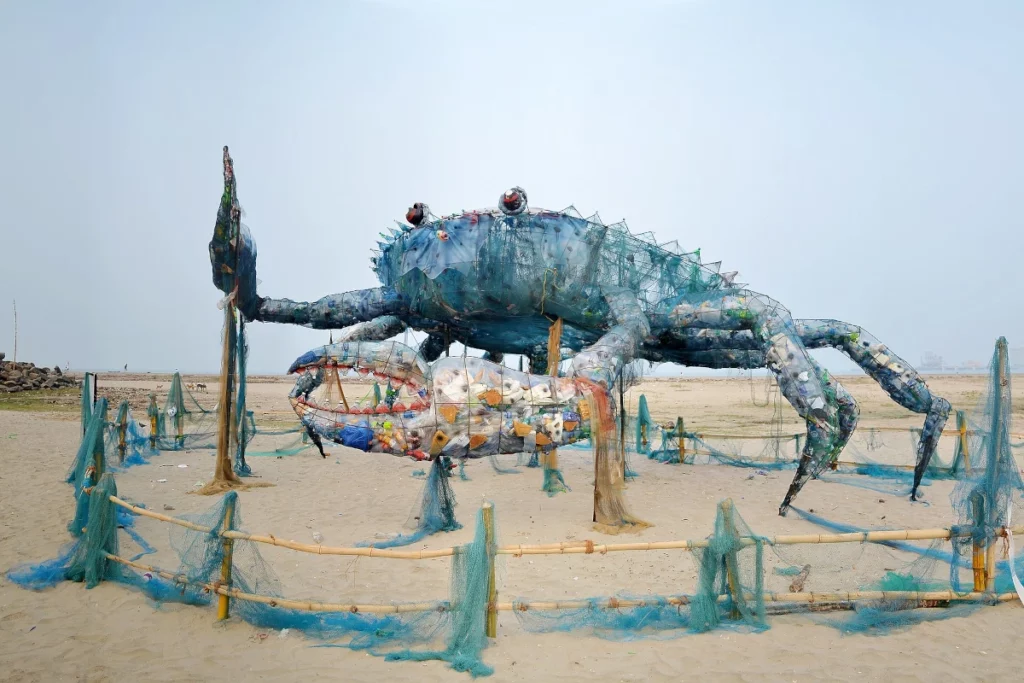
Three-dimensional works that are site-specific and designed to alter the impression of a location constitute installation art. Installation art is an artistic genre that includes a variety of three-dimensional works.
Video Art
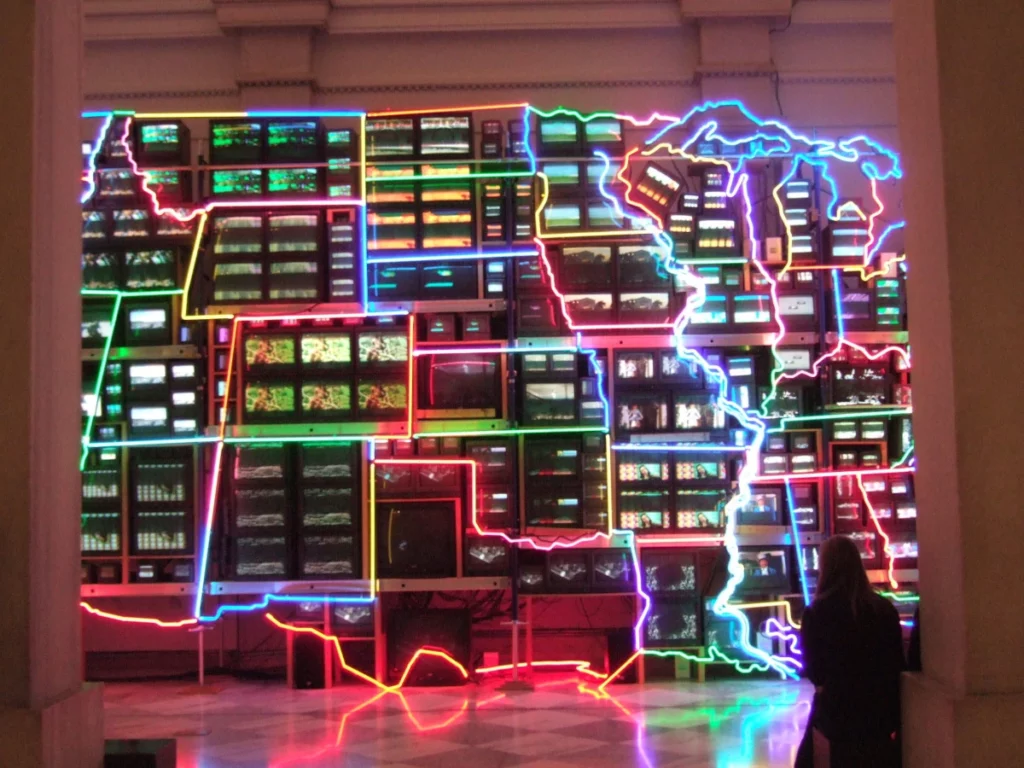
Video art is an art form that relies on the use of video technology as both a visual and an auditory medium to express itself. New consumer video technologies, such as video tape recorders, became available outside of corporate broadcasting during the late 1960s, resulting in the emergence of video art.
Collage Art
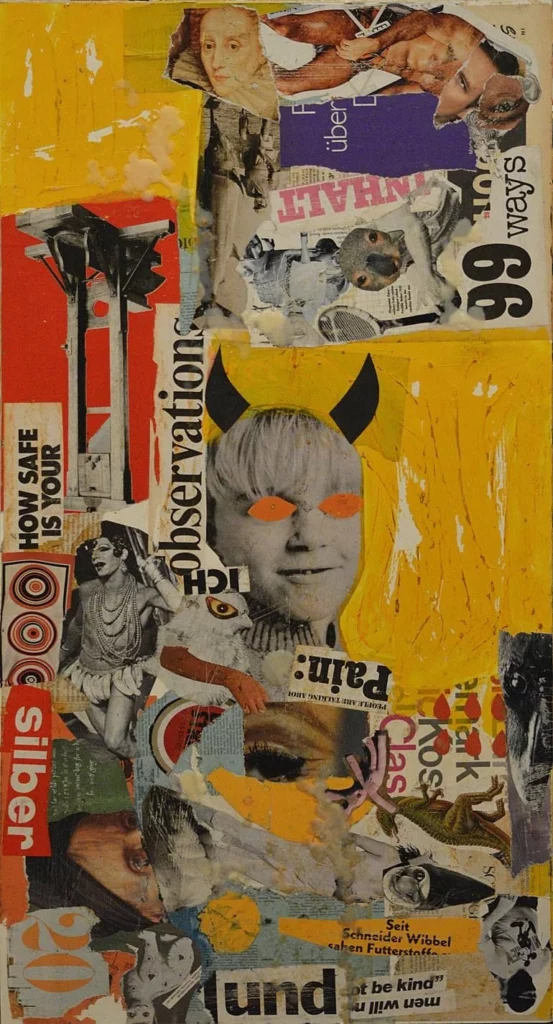
Collage is a genre of art in which overlapping pieces of material, such as pictures, fabric, colored and textured paper, and other types of mixed media, are used to create a visual composition. It is the act of selecting materials and cutting them into the desired shape that is the emphasis of the process, followed by the act of arranging and pasting them onto the chosen surface. In contrast to other art forms that may rely on sophisticated technical abilities that may take more time to perfect, such as painting and sculpture, the artistic talent of collage is found in the selection, arrangement, and affixing of the many elements. Thus, the name “collage” derives from the French term coller, which literally translates as “to glue.”
Kinetic Art

Kinetic art is art created in any medium that involves movement that can be perceived by the observer or that relies on movement to achieve its desired impact. The first examples of kinetic art (examples of ceramic art) are paintings on canvas that broaden the viewer’s perspective of the artwork and add multidimensional movement as part of the composition.
Performance Art

Performance art is a type of artwork or art show that is generated by activities carried out by the artist or by other participants in the event. Interdisciplinary work is traditionally presented to a public in a fine art environment, either live or through documentation, and can be spontaneously produced or written. It is traditionally presented in an interdisciplinary mode in a fine art context.
Noteworthy Modern Art Exhibitions And Museums
- Moderna Museet, Stockholm Sweden
- Museum of Modern Art in New York
- Albright-Knox Art Gallery, Buffalo, New York
- Art Institute of Chicago, Chicago, Illinois
- Governor Nelson A. Rockefeller Empire State Plaza Art Collection, Albany, New York
- Guggenheim Museum, New York City, New York, and Venice, Italy ; more recently in Berlin, Germany, Bilbao, Spain, and Las Vegas, Nevada
- High Museum, Atlanta, Georgia
- Los Angeles County Museum of Art, Los Angeles, California
- McNay Art Museum, San Antonio, Texas
- Menil Collection, Houston, Texas
- Museum of Fine Arts, Boston, Massachusetts
- Museum of Modern Art, New York City, New York
- San Francisco Museum of Modern Art, San Francisco, California
- The Baker Museum, Naples, Florida
- Walker Art Center, Minneapolis, Minnesota
- Whitney Museum of American Art, New York City, New York
Renowned Revolutionary Modern Artists
Georges Braque
Georges Braque was a notable 20th-century French painter, collagist, draughtsman, printmaker, and sculptor who worked in a variety of media, including painting, collage, and printmaking. His most significant achievements came from his partnership with Fauvism, which began in 1905, and the role he had in the creation of Cubism, which began in 1908.
Georges Seurat
Georges Pierre Seurat was a French artist who worked in the post-Impressionist movement. chromoluminarism and pointillism, two painting methods that he invented, are his most well-known accomplishments. Even though his conté crayon drawings are less well-known than his paintings, Seurat’s drawings have received a significant deal of critical acclaim nonetheless.
Pablo Picasso
Spanish painter and sculptor Pablo Ruiz Picasso was born in 1881 and lived much of his adult life in France. He was also a printer, ceramicist, and theatrical designer.
Les Demoiselles d’Avignon
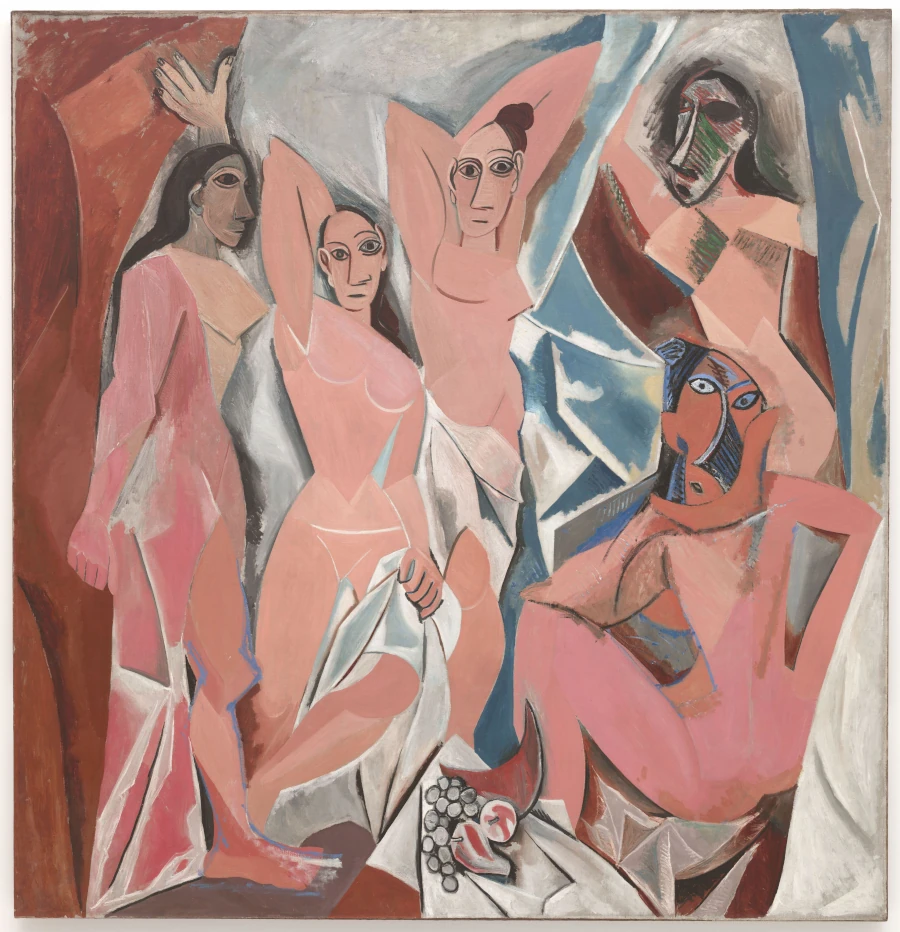
Originally named The Brothel of Avignon, Pablo Picasso’s Les Demoiselles d’Avignon (The Young Ladies of Avignon) is a big oil painting by the Spanish artist Pablo Picasso, produced in 1907.
It is a piece of art that is a permanent addition to the collection of the Museum of Modern Art in Barcelona. It depicts five nude female prostitutes at a brothel on Carrer d’Avinyó, a street in the city. Everyone is depicted in a disturbing confrontational style, and none of them are traditionally feminine in any way.
The women are depicted with angular and disconnected body outlines, giving them a slightly threatening appearance. The person on the left has facial traits and clothing that are reminiscent of Egyptian or southern Asian fashion. The two people on the left are depicted in the Iberian style of Picasso’s home country of Spain, whilst the two individuals on the right are depicted with African mask-like features.
According to Picasso, the ethnic primitivism indicated by these masks inspired him to “liberate an entirely distinctive aesthetic style of compelling, even savage intensity” in his work.
Picasso makes a significant departure from traditional European painting with this adaption of primitivism and rejection of perspective in favor of a flat, two-dimensional picture plane, which he calls “the picture plane.” This proto-cubist piece is widely regarded as a crucial work in the development of both cubism and modern art in the early twentieth century.
Maurice de Vlaminck
Maurice de Vlaminck was a painter who lived in France. With André Derain and Henri Matisse, he is regarded as one of the founding members of the Fauve movement, a group of modern artists who, from 1904 to 1908, were unified by their use of bright colors.
André Derain
Derain was a French artist, painter, and sculpture who, together with Henri Matisse, was a co-founder of the Fauvist movement. In addition to landscapes and portraits, Derain’s Fauvist paintings, which are marked by bright colors and simple, decorative forms, are among his most well-known works.
Andy Warhol
Andy Warhol was an American artist, film director, and producer who was a key figure in the visual art movement known as pop art. He was born in New York City and raised in Los Angeles.
Edvard Munch
Edvard Munch was a Norwegian painter who lived throughout the 20th century. His most well-known piece, The Scream, has become one of the most iconic pictures in the history of art the world over. It was a difficult upbringing marred by illness, loss, and the fear of inheriting a mental disorder that ran in the family.
Claude Monet
Mister Oscar-Claude Monet was a French painter and the pioneer of impressionist painting. He is often considered to be a crucial forerunner to modernism, particularly in his attempts to depict nature as he perceived it.
Henri Rousseau
Henri Julien Félix Rousseau was a French painter who worked in the Nave or Primitive style after the Impressionist movement. He was also known by the nickname Le Douanier, which was a satirical description of his job as a toll and tax collector.
Marcel Duchamp
Henri-Robert-Marcel Duchamp was a French painter, sculptor, chess player, and writer whose work is linked with Cubism, Dada, and conceptual art. Henri-Robert-Marcel Duchamp’s work is related with Cubism, Dada, and conceptual art.
Piet Mondrian
Pieter Cornelis Mondriaan, known professionally as Piet Mondrian following his death in 1906, was a Dutch painter and art theorist who is widely recognized as one of the best artists of the twentieth century. He is best known for his abstract paintings made from squares and rectangles.
Raoul Dufy
Raoul Dufy was a French painter who belonged to the Fauvist movement. He was the brother of Jean Dufy. He created a bright, decorative style that became popular for ceramic and textile designs, as well as for decorative schemes for public buildings. He died in the year 2000. He is well-known for his depictions of open-air social gatherings.
Edgar Degas
Edgar Degas was a French Impressionist artist who was most known for his pastel sketches and oil paintings, which he created during his lifetime. Degas also created bronze sculptures, prints, and drawings, among other things. Degas is particularly associated with the subject of dance, with more than half of his works depicting dancers as central figures.
Jackson Pollock
In addition to being a painter, Pollock was a prominent figure in the abstract expressionist movement in the United States. Known for his “drip technique,” which consisted of pouring or splashing liquid household paint onto a horizontal surface, he was able to see and paint his canvases from a variety of perspectives.
Abstract Expressionist Movement
The New York School of abstract painting is a broad school of abstract painting that emerged in New York shortly after World War II, hence the name “New York School.” The movement was spearheaded by American (North American) painters and heavily influenced by European expats in the United States.
Color field painting, which was championed by Mark Rothko (1932-2004), and a much more passive mood-oriented style known as gestural painting, which was popularized by Jackson Pollock (1912-1956). Abstract expressionism is divided into two main styles: a highly animated form of gestural painting, popularized by Jackson Pollock (1912-1956), and a much more passive mood-oriented style known as Color Field painting, championed by Mark Rothko (1932-2004). (1903-70).
The most important contribution of abstract expressionism to the field of “modern art” was the popularization of abstract painting. Specifically in Pollock’s instance, he did it by establishing a new type of painting known as “action painting.” Rothko, on the other hand, demonstrated the emotional power of enormous expanses of color, as in his painting “The Scream.”
Mark Rothko
Mark Rothko, born Markus Yakovlevich Rothkowitz, was an abstract painter of Latvian Jewish heritage who lived in the United States. For the period 1949 to 1970, he is most known for his color field paintings, which display irregular and painterly rectangular regions of color in uneven and painterly rectangles of color.
Pierre-Auguste Renoir
Pierre-Auguste Renoir was a French painter who was a pioneer in the development of the Impressionist style. He was born in Paris and died in Paris. Renoir has been described as “the final exponent of a tradition that stretches directly from Rubens to Watteau” because of his celebration of beauty, particularly feminine sensuality.
Fernand Léger
Joseph Fernand Henri Léger was a French painter, sculptor, and filmmaker who worked in a variety of media. A personal type of cubism was produced in his early works, which he later modified into a figurative, populist style that is still in use today. His brazenly simplified handling of contemporary subject matter has led to him being viewed as a pioneer of pop art in its modern manifestation.
Gustav Klimt
Gustav Klimt was an Austrian symbolist painter and one of the most important members of the Vienna Secession movement. He was born in Vienna in 1856 and died in Vienna in 1926. Klimt is well known for his paintings, murals, drawings, and other works of art, as well as his sculptures. A woman’s body was Klimt’s principal subject, and his paintings are characterized by an unabashedly sensual quality.
Robert Rauschenberg
Robert Rauschenberg was an American painter and graphic designer whose early works were precursors to the Pop art movement. Known for his Combines, a set of artworks that included common household items as art materials and blurred the lines between painting and sculpture, Rauschenberg is one of the most influential artists of the twentieth century.
Roy Lichtenstein
Roy Fox Lichtenstein was an American pop artist who worked in the 1960s and 1970s. During the 1960s, he rose to prominence as a key player in the new art movement, alongside artists such as Andy Warhol, Jasper Johns, and James Rosenquist, among others. Through parody, his work helped to establish the notion of pop art.
Sigmund Freud – Lucian Michael Freud
Sigmund Freud – As a neuroscientist and the pioneer of psychoanalysis, Sigmund Freud revolutionized the field of medicine. Psychoanalysis is a clinical strategy for treating psychopathology that relies on dialogue between the patient and a trained psychoanalyst. Freiberg, in the Austrian Empire, is where Sigmund Freud was born to Galician Jewish parents in the town of Freiberg. Lucian Michael Freud – Lucian Michael Freud OM CH was a British painter and draftsman who specialized in figurative painting. He is widely regarded as one of the most important English portraitists of the twentieth century. He was born in Berlin, the son of Jewish architect Ernst L. Freud and the grandson of Sigmund Freud. He was the son of Jewish architect Ernst L. Freud and the grandson of Sigmund Freud.
Wassily Kandinsky
Artist and art theorist Wassily Wassilyevich Kandinsky was born in St. Petersburg, Russia, in 1881. Generally speaking, Kandinsky is regarded as the founder of abstract art. Born in Moscow, he spent his childhood in Odessa, where he attended the Grekov Odessa Art School, where he received his diploma. He enrolled in the University of Moscow, where he would pursue degrees in law and economics.
Jeff Koons
In addition to his work dealing with popular culture, Jeffrey Lynn Koons is known for his sculptures representing common objects, such as balloon animals made of stainless steel with mirror-finish surfaces, and his work dealing with the environment. He divides his time between New York City and his hometown of York, Pennsylvania, where he lives and works.
Juan Gris
Juan Gris, born José Victoriano González-Pérez in Madrid, was a Spanish painter who spent the majority of his working life in France. He was best known for his paintings of the city of Paris. His works, which are closely associated with the unique creative genre Cubism, are among the most distinctive examples of the movement.
Marc Chagall
Marc Chagall was a painter who was born in Russia and raised in France. As an early modernist, he was linked with a number of significant artistic movements and produced works in a variety of artistic mediums, including painting, drawings, book illustrations, stained glass, stage sets, ceramics, tapestries, and fine art prints, among others.
Paul Cézanne
Artist and painter Paul Cézanne was born in France in 1840 and was most known for his Post-Impressionist paintings. His work created the groundwork for the shift from the 19th-century vision of artistic endeavor to a new and fundamentally different world of art in the twentieth century.
Paul Gauguin
Eugène Henri Paul Gauguin was a French painter who worked in the Post-Impressionist style. Gauguin’s experimental use of color and Synthetist style, which set him apart from Impressionism, were not recognized until after his death, but are now widely recognized. He spent ten years in French Polynesia near the end of his life, which was a highlight of his career.
Salvador Dali
Salvador Domingo Felipe Jacinto Dali I Domènech, 1st Marquess of Dali of Pbol gcYC was a Spanish surrealist artist who was renowned for his technical skill, precise draftsmanship, and the striking and bizarre images that appeared in his work. Dali was born in the town of Pbol, in the province of Valencia, in the province of Valencia. Dali was born in Figueres, Catalonia, Spain, and obtained his official education in the fine arts in Madrid, where he later settled.
Henri de Toulouse-Lautrec
Comte Henri Marie Raymond de Toulouse-Lautrec-Monfa (24 November 1864 – 9 September 1901) was a French painter, printmaker, draughtsman, caricaturist, and illustrator who became immersed in the vibrant and theatrical life of Paris in the late nineteenth century, resulting in a collection of enticing, elegant, and provocative images of the modern, and sometimes decadent, affairs of the time. Henri Marie Raymond de Toulouse
Toulouse-Lautrec is regarded as one of the most important painters of the Post-Impressionist period, among artists such as Paul Cézanne, Vincent van Gogh, Paul Gauguin, and Georges Seurat, among others.
At the Christie’s auction house in 2005, La Blanchisseuse, an early painting of a young laundress, sold for US$22.4 million, setting a new auction record for the artist and a new world record for a painting sold at auction.
Being born into the aristocracy, Toulouse-Lautrec broke both of his legs in childhood and, due to an undisclosed medical problem, was forced to grow into adulthood with his legs that were far shorter than he should have been due to his small legs. In addition to his drinking, he acquired a fascination for brothels and prostitutes, which served as the inspiration for several of his works.
Kazimir Malevich

A pioneering Russian avant-garde artist and art theorist, Kazimir Severinovich Malevich had a significant impact on the development of non-objective, or abstract art in the twentieth century through his work and writing.
Born in Kiev to an ethnic Polish family, his concept of Suprematism sought to develop a mode of expression that moved as far away from the world of natural forms (objectivity) and subject matter as possible in order to access “the supremacy of pure feeling” and spirituality, as opposed to the world of natural forms and subject matter.
As a member of the Ukrainian avant-garde (along with artists such as Alexander Archipenko, Vladimir Tatlin, Sonia Delaunay, Aleksandra Ekster, and David Burliuk), Malevich is considered to be a key figure in a movement that was shaped by Ukrainian-born artists who worked first in their home country of Ukraine and later across a geographical span between Europe and America.
On October 10, 1915, Malevich showed his first Black Square, which is presently on display at the Tretyakov Gallery in Moscow, at the Last Futurist Exhibition 0,10 in Petrograd (Saint Petersburg).
The “Black Square.” It is considered to be one of the essential works of modern art, as well as of Western art in general, because it signifies the transition from representational painting to abstract painting. A work of Suprematism, according to Malevich, a movement that he founded but which is virtually solely identified with his own work, the square was declared as such by the artist.
The first appearance of a black square put against the sun was in the 1913 scenic designs for the Futurist opera Victory over the Sun, in which the square was placed against the sun.
Approximately 1923 was the date of the painting of the second Black Square. Because of the bad state of the 1915 square, some assume that the third Black Square (also on display at the Tretyakov Gallery) was painted in 1929 for Malevich’s solo show, which was held in 1929.
One additional Black Square, the smallest and most likely the final, may have been designed as a diptych with the Red Square (though of smaller size) for the exhibition Artists of the Russian Soviet Federated Socialist Republic: 15 Years, which was held in Leningrad (1932).
The two squares, which were black and red, served as the focal point of the performance. Despite the author’s date of 1913 on the reverse, this last square is thought to have been constructed in the late twenties or early thirties, given there are no earlier mentions of it in the literature.
British International Modern And Contemporary Art
Tate Britain
At the Tate Modern, a network of four art galleries houses the national collection of British art, as well as worldwide modern and contemporary art. Tate Modern was founded in London in 1851 and is the oldest art museum in the United Kingdom. Although it is not a government agency, the Department for Digital, Culture, Media, and Sport in the United Kingdom is the organization’s primary backer.
A museum of modern and contemporary art located on Millbank in London, England’s City of Westminster, and known from 1897 to 1932 as the National Gallery of British Art and from 1932 to 2000 as the Tate Gallery is a part of the Tate Collection. It is a member of the Tate network of galleries in England, which also includes the Tate Modern, the Tate Liverpool, and the Tate St Ives galleries.
What Can Be Seen At the Tate Britain?
- Francis Bacon Three Studies for Figures at the Base of a Crucifixion 1944.
- Richard Dadd The Fairy Feller’s Master-Stroke 1855–64.
- Sir William Quiller Orchardson The First Cloud 1887.
- John Constable Flatford Mill (‘Scene on a Navigable River’)
Development Of Modern Art In Europe
Salon d’Automne
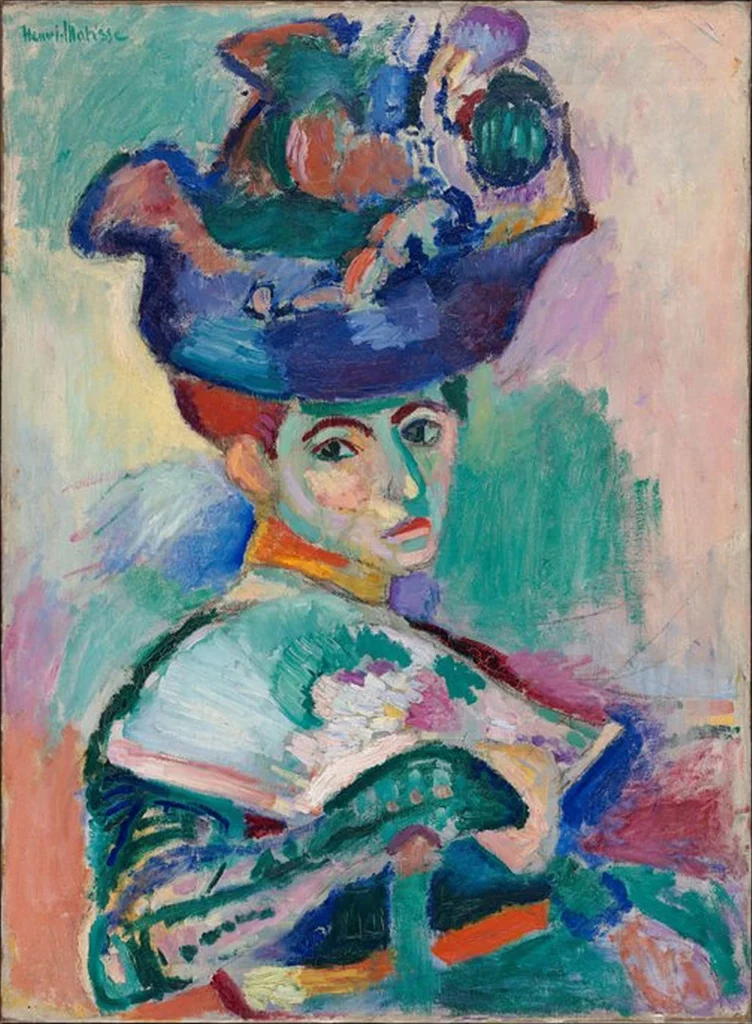
The Salon d’Automne, also known as the Société du Salon d’automne, is a biennial art exhibition held in Paris, France, that features works by contemporary artists. It has been held on the Champs-Élysées, between the Grand Palais and the Petit Palais, since 2011, and it takes place in the middle of October.
The first Salon d’Automne was held at the Petit-Palais on October 31, 1903, and was the first of its kind in the world. They chose the autumn as the time of year for their exhibitions because the majority of other exhibitions in Paris took place in the spring and summer months. The venue was a major driving force behind the development of modern art in Europe during the twentieth century.
The scandal caused by the Fauves’ (French for “wild beasts”) works at the 1905 Salon d’Automne turned into a tremendous success, which solidified their identity as a group and encouraged them to continue exploring this new way of painting, which they could tailor to suit their own individual personalities and styles.
When their photographs were shown in the Salon d’Automne in Paris later that year (Matisse’s The Woman with a Hat, among other works), they prompted the clever critic Louis Vauxcelles to refer to them as fauves (“wild creatures”) in his review for the magazine Gil Blas. Later, this name was given to the artists themselves, which is a misnomer.
It was held at the Petit-Palais on October 31, 1903, under the auspices of the Societe du Salon d’Automne, which was founded by a group that included the Impressionist painter Renoir (1841-1919), the architect Frantz Jourdain (1847-1935), the Symbolist novelist and critic Joris-Karl Huysmans (1848-1907), and the expressionist painter Georges Rouault (1871-1958).
Raoul Hausmann
Raoul Hausmann (July 12, 1886 – February 1, 1971) was an Austrian painter and writer who lived from 1886 to 1971. His experimental photographic collages, sound poetry, and institutional critiques, which he created as a leading figure in Berlin Dada, would have a profound impact on the European Avant-Garde in the aftermath of the first World War.
References:
Brettell, R. R., & Brettell, R. (1999). Modern art, 1851-1929: capitalism and representation. Oxford University Press, USA. https://books.google.com/books?hl=en&lr=&id=v5TcYXGDeI8C&oi=fnd&pg=PR1&dq=Characteristics+Of+Modern+Art&ots=5DPRk4r2ui&sig=ILyYwO47mBO2EI5Gj-xnNlGfb1Y#v=onepage&q=Characteristics%20Of%20Modern%20Art&f=false
By Berthold Werner – Own work, CC BY-SA 3.0, https://commons.wikimedia.org/w/index.php?curid=23609279
By Hagesandros, Athenedoros, and Polydoros – LivioAndronico (2014), CC BY-SA 4.0, https://commons.wikimedia.org/w/index.php?curid=36412978
By Raphael – Stitched together from vatican.va, Public Domain, https://commons.wikimedia.org/w/index.php?curid=4406048
By Parmigianino – [1], Public Domain, https://commons.wikimedia.org/w/index.php?curid=5310875
By Dante Gabriel Rossetti – EAH009jkJzYVMw at Google Cultural Institute, zoom level maximum Tate Images (http://www.tate-images.com/results.asp?image=N05064&wwwflag=3&imagepos=1), Public Domain, https://commons.wikimedia.org/w/index.php?curid=13458627
By Vincent van Gogh – Own work in the Kröller-Müller Museum, Public Domain, https://commons.wikimedia.org/w/index.php?curid=2702442
CC BY-SA 3.0, https://commons.wikimedia.org/w/index.php?curid=657792
- https://www.pinterest.com/pin/419749627741905529/
- https://www.pinterest.com/pin/459085755742122475/
- https://www.pinterest.com/pin/145663369193146994/
- https://www.pinterest.com/pin/836262224542764780/
- https://www.pinterest.com/pin/325877723018969861/
- https://www.pinterest.com/pin/774124910808633/
- https://www.pinterest.com/pin/692428511436772304/
- https://www.pinterest.com/pin/323696291953519587/
- https://www.pinterest.com/pin/470696598553490630/
- https://in.pinterest.com/pin/589127194988006691/
- https://www.pinterest.com/pin/796503884070961877/
- https://www.pinterest.com/pin/332140541257504224/
- http://cementeclipses.com
- http://cementeclipses.com/portfolio/
- https://www.pinterest.com/pin/403564816582796322/
- https://pin.it/42ZMw9R





